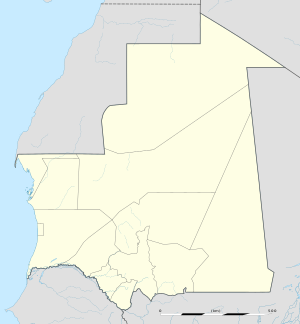Koumbi Saleh
| Koumbi Saleh | |
|---|---|
| Site of medieval town | |
| Location within Mauritania | |
| Coordinates: 15°45′56″N 7°58′07″W / 15.76556°N 7.96861°WCoordinates: 15°45′56″N 7°58′07″W / 15.76556°N 7.96861°W | |
| Country |
|
Koumbi Saleh, sometimes Kumbi Saleh is the site of a ruined medieval town in south east Mauritania that may have been the capital of the Ghana Empire.
From the ninth century, Arab authors mention the Ghana Empire in connection with the trans-Saharan gold trade. Al-Bakri who wrote in eleventh century described the capital of Ghana as consisting of two towns 6 miles apart, one inhabited by Muslim merchants and the other by the king of Ghana. The discovery in 1913 of a 17th-century African chronicle that gave the name of the capital as Koumbi led French archaeologists to the ruins at Koumbi Saleh. Excavations at the site have revealed the ruins of a large Muslim town with houses built of stone and a congregational mosque but no inscription to unambiguously identify the site as that of capital of Ghana. Ruins of the king's town described by al-Bakri have not been found. Radiocarbon dating suggests that the site was occupied between the late 9th and the 14th centuries.
The earliest author to mention Ghana is the Persian astronomer Ibrahim al-Fazari who, writing at the end of the eighth century, refers to "the territory of Ghana, the land of gold". The Ghana Empire lay in the Sahel region to the north of the West African gold fields and was able to profit from controlling the trans-Saharan gold trade. The early history of Ghana is unknown but there is evidence that North Africa had begun importing gold from West Africa before the Arab conquest in the middle of the seventh century.
In the mediaeval Arabic sources the word "Ghana" can refer to a royal title, the name of a capital city or a kingdom. The earliest reference to Ghana as a town is by al-Khuwarizmi who died in around 846 AD. Two centuries later a detailed description of the town is provided by al-Bakri in his Book of Routes and Realms which he completed in around 1068. Al-Bakri never visited the region but obtained his information from earlier writers and from informants that he met in his native Spain:
...
Wikipedia

